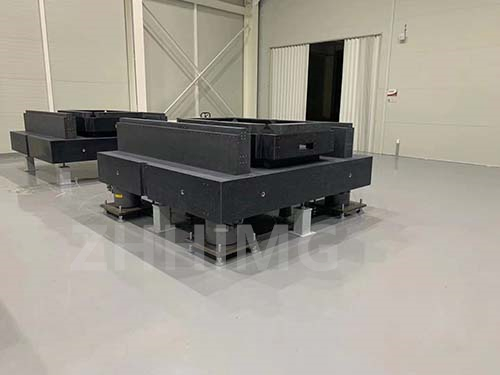Precision granite rails are widely used in various industries for their accuracy and stability in manufacturing and inspection processes. These rails are made of high-quality granite which makes them resistant to temperature changes, wear and tear, and other environmental factors. Most importantly, precision granite rails ensure that your measurement or machining is accurate, and quality meets the desired standards. Here, we’ll discuss how to use precision granite rails to get precise measurements and better outcomes.
Step 1: Inspection of the rail
Before starting with the inspection work, it is advisable to check the rail for any damages, wear, and tear, as even a small scratch could affect the accuracy of your measurements. Also, inspect if the granite is clean and free from any particles. Firstly, clean the rail with a soft brush and wipe with a clean cloth. Inspect the surface under direct light to check for any irregularities. If there is a deviation, use a precision tool to rectify it before using it for further measurement.
Step 2: Setting up the rail
Mount the rail on a flat surface, ensuring that it is securely placed. Ensure that the rail is levelled using a spirit level and that it is aligned to the direction of measurement. If not, use precision blocks to adjust the rail’s levelness. Clamp the rail using the clamping mechanisms provided to avoid any movement during the measurement process.
Step 3: Taking final measurement
Once the rail is set up correctly, use calibrated measurement equipment such as callipers, micrometres, height gauges, and other precision instruments to take measurements. Ensure that you take measurements from various angles and positions to get an accurate reading. Use the rail’s flat edge to ensure perpendicular measurements, and use the rail’s V-groove to hold cylindrical workpieces for more precise measurements.
Step 4: Cleaning and maintenance
After completing the measurement process, clean the rail, and ensure that there are no contaminants on the surface. It is imperative not to use any aggressive chemicals that can damage the granite surface. Use a soft brush or cloth and clean water to remove any particles from the surface. Always cover the rail with dust cover when not in use to protect the surface.
In conclusion, a precision granite rail is the perfect tool for anyone looking to get accurate measurements. Following the guidelines above will give you the best results. In any case, with proper use and maintenance, your precision granite rail will provide you with years of accurate measurements that will enhance your production and quality outcomes.
Post time: Jan-31-2024

